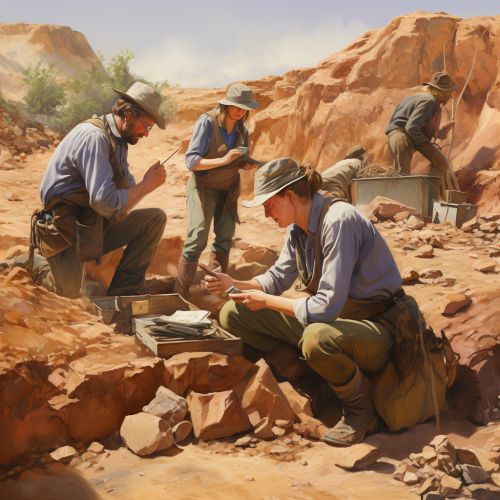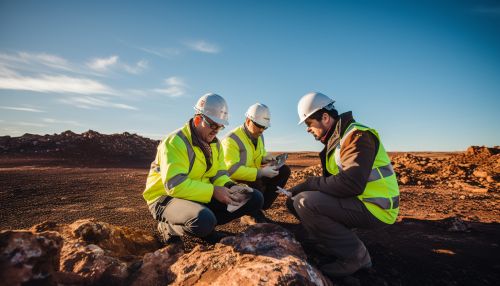Mineral exploration
Introduction
Mineral exploration is the process of finding ores (commercially viable concentrations of minerals) to mine. Mineral exploration is a much more intensive, organized and professional form of mineral prospecting and, though it frequently uses the services of prospecting, the process of mineral exploration, on the whole, is much more involved.


The importance of mineral exploration
Mineral exploration is an important part of the economic development of many countries. It provides the raw materials for many industries, including manufacturing, construction, and energy production. The discovery of new mineral deposits can lead to the opening of new mines, which can create jobs, stimulate economic growth, and contribute to a country's wealth.
The stages of mineral exploration
Mineral exploration can be divided into several stages, depending on the level of detail and the goals of the exploration program.
Reconnaissance
The initial stage of mineral exploration is known as reconnaissance. This is a broad, regional study aimed at identifying areas with potential for mineralization. It involves the collection and analysis of regional geological data, such as geological maps, aerial photographs, and geophysical surveys. This data is used to identify areas with the right geological conditions for mineralization.
Target generation
Once potential areas have been identified, the next stage is target generation. This involves more detailed studies to identify specific targets for further investigation. This may involve geochemical surveys, detailed geological mapping, and geophysical surveys. The goal is to identify specific locations where mineralization is likely to occur.
Resource evaluation
The final stage of mineral exploration is resource evaluation. This involves drilling to collect samples of rock and ore for analysis. The results of these analyses are used to estimate the size and grade of the mineral deposit. This information is used to determine whether mining the deposit would be economically viable.
Techniques used in mineral exploration
A variety of techniques are used in mineral exploration, depending on the stage of exploration and the type of mineral being sought.
Geological mapping
Geological mapping is a fundamental tool in mineral exploration. It involves the systematic collection of data about the rocks and structures in an area. This information is used to create a map showing the distribution of different rock types and structures. This can help to identify areas with the right geological conditions for mineralization.
Geochemical surveys
Geochemical surveys involve the collection and analysis of soil, rock, and water samples to identify anomalies – areas where the concentration of certain elements is higher than normal. These anomalies can be an indication of mineralization.
Geophysical surveys
Geophysical surveys use the physical properties of rocks, such as their magnetic, electrical, and gravitational properties, to identify anomalies. These anomalies can be an indication of mineralization.
Challenges in mineral exploration
Mineral exploration is a challenging and risky endeavor. It requires significant investment of time and resources, and there is no guarantee of success. Even when a promising mineral deposit is found, there are many factors that can affect its economic viability, including market prices, extraction costs, and environmental and social impacts.
Conclusion
Despite the challenges, mineral exploration plays a crucial role in the global economy. It provides the raw materials for many industries and can contribute to economic development in many regions. With advances in technology and our understanding of the Earth's geology, the future of mineral exploration looks promising.
